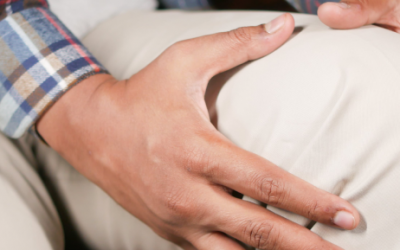What is a Disc Herniation?
Disc herniation, or slipped disc, is a common condition that frequently affects the spine in young and middle-aged patients. To help you understand this condition, we need to explain some basic anatomy of the spine.
Anatomy of the Spine
Between spinal vertebrae, there are intervertebral discs that act as cushions to dissipate forces traveling through the spine and provide extra stability. These discs consist of two structures:
- Annulus fibrosus: An outer ring
- Nucleus pulposus: An inner, jelly-like core
How Does a Disc Herniate?
As part of the normal aging process, the disc can dehydrate and lose some of its properties. This increases the strain on the fibers of the annulus fibrosus, causing the outer ring to bulge, crack, or tear. This stress can lead to herniation, where the nucleus pulposus pushes through the annulus fibrosus if enough force is applied. A similar injury can occur if a significant force is placed on a healthy disc.
“Herniated or slipped disc is referred when one of the soft, gel-filled discs between the vertebrae of the spine bulges or ruptures, compressing and/or irritating the nearby nerves.”

Symptoms of a Disc Herniation
A herniated disc can irritate nearby nerves, leading to symptoms such as pain, numbness, tingling, or weakness. Note that not all people with disc herniation experience symptoms, and most recover well without surgery.
“Not all people with disc herniation experience symptoms.”
Common Symptoms Include:
- Buttock, leg, or arm pain: Depending on which nerves are affected, a lumbar herniated disc can cause intense pain in the buttock, leg, calf, or foot. A cervical herniation often causes shoulder and arm pain.
- Lower back or neck pain: Usually not the dominant symptom in people with a herniated disc.
- Numbness or tingling: These symptoms may occur in areas supplied by the affected spinal nerves.
- Weakness: Muscles supplied by the affected nerve roots may become weak, affecting walking or the ability to hold or lift objects.
“Contact 999 if you have loss of control of both leg and feet; numbness or tingling in the genitals or around or you suddenly can’t pee or control when you pee or poo. This may indicate a more serious problem.”
What Can You Do?
- Stay Active: As much as you can tolerate.
- Avoid Bed Rest: Prolonged rest can worsen symptoms.
- Avoid Aggravating Activities: Steer clear of movements that worsen your symptoms.
- Pain Management: Speak to your pharmacist about pain medications.
- Seek Professional Help: Contact your local osteopath to assess your symptoms.
How We Can Help
Our Approach: Explain – Treat – Advise – Return to Daily Activities
- Explanation and Education: We educate our patients about their condition and how to manage their symptoms actively. Understanding your condition can reduce unnecessary stress and anxiety.
- Tailored Treatment: We offer individualized treatments to reduce pain and facilitate recovery.
- Therapeutic Exercises: We provide exercises and guidance throughout your recovery process to help you return to normal activities as soon as possible.
- Prevention Strategies: We help create personal prevention strategies to avoid future issues.
- Patient-Centered Care: We refer you for scans, tests, or to appropriate consultants if further investigation is needed.
Preventing Slipped Discs
- Practice Correct Posture: Stand, walk, and sit properly to avoid back injuries.
- Avoid Smoking: Smoking is linked with back pain.
- Safe Lifting Techniques: Use your legs, don’t lift and twist, and ask for help with heavy objects.
- Maintain a Healthy Weight: Extra weight adds stress to the spine.
- Stay Physically Active: Strong core muscles support the spine.
See also:
- Exercises for back pain
- Sciatica What is it?
- 3 Steps to deal with back pain
- Scoliosis – What you need to know
Sources:
Treatment of lumbar disc herniation: Evidence-based practice (2010). Int J Gen Med. 2010; 3: 209–214. Andrew J Schoenfeld and Bradley K Weiner
https://www.nhs.uk/conditions/slipped-disc/



